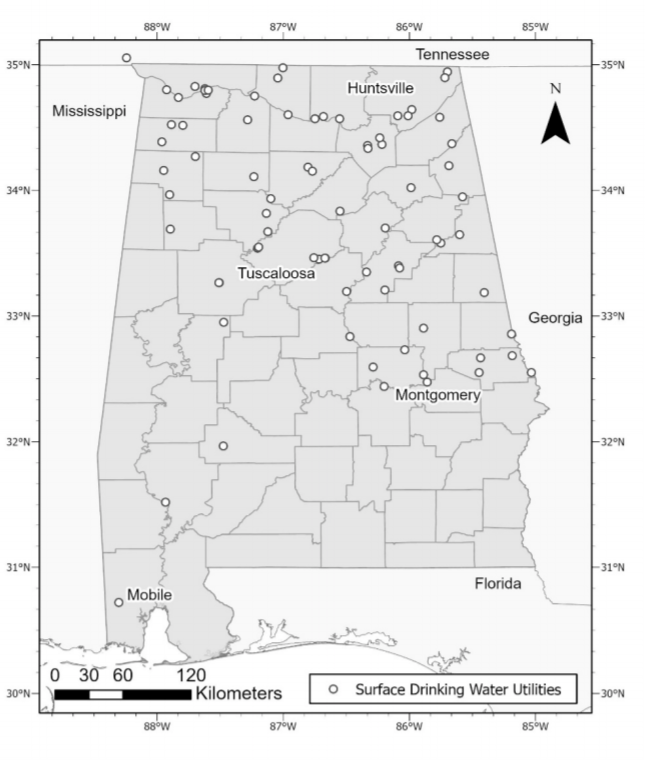Keyword: taste and odor compounds

Fernandez-Figueroa, E. G., R. P. Buley, M. U.G. Barros, M. F. Gladfelter, W. D. McClimans, and A. E. Wilson. 2021. Carlson’s trophic state index is a poor predictor of cyanobacterial dominance in drinking water reservoirs. AWWA Water Science 3(2):e1219.
Abstract
A 20-month survey of 71 surface drinking water utilities across 44 waterbodies was conducted to determine whether the commonly used Trophic State Index (TSI) is a reliable indicator of eutrophication in drinking water sources. Raw water quality results showed that cyanobacteria, cyanotoxins (i.e., microcystin), and taste and odor (T&O) compounds (i.e., 2-methylisoborneol and geosmin) were generally low in the utilities sampled. TSI values based on chlorophyll concentrations (TSI Chl-a) were closely related to phytoplankton, cyanotoxin, and T&O concentrations and indicated that most drinking water sources were mesotrophic or eutrophic. However, TSI values based on total phosphorus (TSI TP) indicated that the drinking water sources were eutrophic or hypereutrophic. These results suggest that TSI Chl-a is a better predictor of cyanobacteria and their compounds than TSI TP. Phytoplankton abundance decreased with depth; therefore, managers should consider switching to deeper intakes when TSI Chl-a values increase to reduce removal costs.